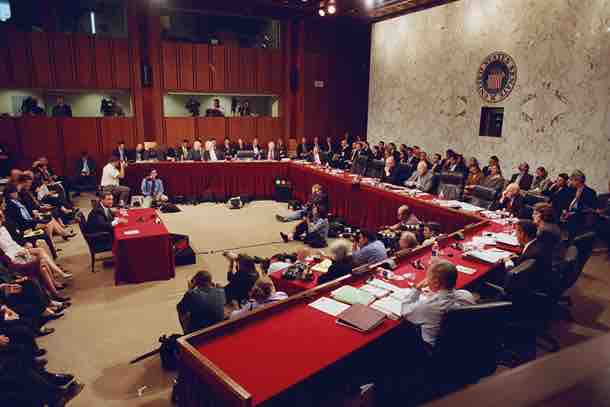Senate Confirmation
Background
Under the United States Constitution and law of the United States, certain federal positions appointed by the president of the United States require confirmation (advice and consent) of the United States Senate. These positions are referred to as Presidential Appointment with Senate confirmation (PAS).
PAS positions, as well as other types of federal government positions, are published in the United States Government Policy and Supporting Positions (Plum Book), which are released after each United States presidential election.
Senate Confirmation and Checks and Balances
United States Supreme Court Justices are appointed by the president and confirmed by the Senate. In theory, this procedure allows both the executive and legislative branches to have some power over the judiciary and thus check the judicial branch's power. However, following confirmation by the Senate, all Supreme Court justices hold office for life unless they are impeached or they voluntarily retire. Because justices serve for life, their appointments can be politically controversial if they are perceived to have been appointed to implement or serve a more partisan agenda.

John Roberts Confirmation Hearings
Under the Constitution, the Senate have advice and consent on any nominations made by the President to the Supreme Court of the United States. Here, the Senate Judiciary Committee confirmation hearings of John Roberts to be Chief Justice of the Supreme Court of the United States, 2005.
The principle of checks and balances allows branches of government to be isolated from each other so that no branch has total power over all functions of government. As such, an attack on or abuse of power by individuals of a single branch will not lead to tyranny or the fall of the entire government. The judicial branch, however, holds the potential to nullify laws approved by the legislative branch, disregard the executive branch, and, (in essence) control the rule of law in the United States in accordance to the opinions of its sitting justices.